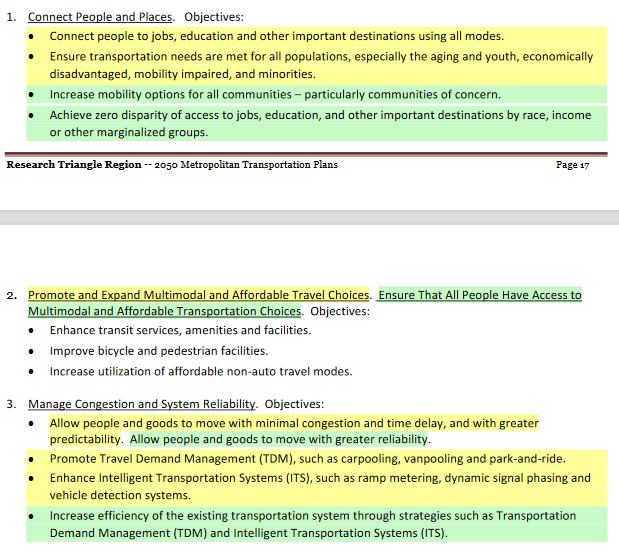
1/ Let's talk about why the group of connectivity projects (some of them quite good) proposed by Central Houston for the massive $10B I-45 North Houston Highway Improvement Project (NHHIP) are lipstick on a pig. 







2/ First, a bit of review. The monster I-45 expansion project would require the demolition of 1,079 housing units (of which 486 are public and/or low-income), 344 businesses, and 2 schools.
These are massive impacts.
These are massive impacts.

3/ In response, Harris County filed for relief against TxDOT under NEPA and Section 4(f). A coalition of NGOs sued TxDOT under Title VI of the 1964 Civil Rights Act. Finally, FHWA requested TxDOT pause the project. 





4/ The disparate impacts from the NHHIP are not limited to affordable housing loss. The NGO complaint notes that the project would degrade air quality in "predominantly lower-income communities of color..." (Note: MSATs are mobile source air toxics) 

5/ The expansion of I-45 will dramatically increase VMT, leading to spikes of up to 175% for harmful pollutants like Benzene at Bruce Elementary and the Houston Academy for International Studies, among others. 



6/ How nasty is Benzene (just one of many harmful tailpipe pollutants)? Well, according to the CDC, it damages bone marrow and can cause anemia. 

7/ Ok, so let's talk about what Central Houston wants to do. Short answer: a bunch of expensive but pretty cool stuff. Total estimated cost: $737 million.
BUT...
These projects are emphatically not a meaningful remedy to NHHIP impacts.
BUT...
These projects are emphatically not a meaningful remedy to NHHIP impacts.

9/ The EaDo cap park would have an "Event Law" for, well, events. Again, love it.
But what's this got to do with smog, mobile source toxics, and the loss of 1,079 housing units, 344 businesses, and 2 schools?
Answer: Nothing.
But what's this got to do with smog, mobile source toxics, and the loss of 1,079 housing units, 344 businesses, and 2 schools?
Answer: Nothing.

10/ The Andrews Street Reconnection is also a cool project that won't replace lost affordable housing or reduce the disparate burden of increased air pollution on low-income and communities of color. 

11/ They also want better bridges over highways. They are calling them "garden bridges," which is...a stretch.
Improving pedestrian and bike facilities is great. It's also not a meaningful remedy for the harms of the NHHIP.
Improving pedestrian and bike facilities is great. It's also not a meaningful remedy for the harms of the NHHIP.

12/ Central Houston argues that the package of projects would provide "neighborhood connectivity." Sure.
But that's not the basis of the civil rights complaints filed against NHHIP.
But that's not the basis of the civil rights complaints filed against NHHIP.

13/ Note the wording. The package of projects would serve as a "necessary correction for past inequitable transportation decisions." Again, these projects are NOT a meaningful remedy for the harms that the NHHIP *will* cause. 



14/ And how does Central Houston envision paying for these improvements? Tax increment financing (TIF).
Question.
Why should locals shoulder the cost burden to remedy harms created by TxDOT? Shouldn't TxDOT pay for TxDOT-caused harms?


Question.
Why should locals shoulder the cost burden to remedy harms created by TxDOT? Shouldn't TxDOT pay for TxDOT-caused harms?



15/ The Houston Central report was sent to the FHWA's Title VI Program Team Leader. This set of projects is not a meaningful remedy to the true impacts of NHHIP and FHWA should not allow the proposal to influence its final decision. 

16/ Moreover, the connectivity projects put forward by Houston Central won't address the largest impact of the NHHIP: supercharged exurban sprawl.
https://twitter.com/kevin_degood/status/1465689855963254793
• • •
Missing some Tweet in this thread? You can try to
force a refresh



































